Contributing to Decor: DIY Recycled Metal Projects
In a world where sustainability is becoming increasingly important, recycled metal has emerged as a fantastic material for home decor. Not only does it bring a unique charm and character to your living spaces, but it also offers incredible durability that few other materials can match. Imagine transforming everyday scrap metal into stunning decor pieces that tell a story while also being eco-friendly. This article dives into the fascinating world of DIY recycled metal projects, showcasing how you can enhance your home’s aesthetics while contributing to a more sustainable future.
Recycled metal is not just about saving the planet; it’s about expressing creativity and individuality in your home. When you opt for recycled materials, you’re not only reducing waste but also embracing a style that is uniquely yours. Think of it as giving a second life to objects that might otherwise end up in a landfill. The beauty of recycled metal lies in its versatility; whether you're looking to create rustic charm or modern elegance, there’s a project for everyone.
Moreover, the environmental impact of using recycled metal is significant. By choosing to upcycle, you help reduce the demand for new metal production, which often involves energy-intensive processes that can harm our planet. Instead, you’re making a conscious decision to repurpose materials that already exist, ultimately contributing to a healthier environment. So, why not roll up your sleeves and get started on some exciting DIY projects that not only beautify your home but also promote sustainability?
Transforming recycled metal into stunning wall art can elevate any space in your home. Imagine walking into a room adorned with vibrant, handcrafted metal pieces that catch the light and spark conversation. There are countless designs and techniques to explore, from intricate metal wall hangings to bold geometric shapes that make a statement. You can use old tools, discarded kitchenware, or even scrap metal from construction sites to create art that reflects your personality.
Outdoor metal sculptures are not just decor; they are a way to add character and whimsy to your gardens and patios. Picture a beautifully crafted sculpture that withstands the elements while enhancing the natural beauty of your outdoor space. Crafting unique sculptures can be a rewarding experience, allowing you to express your artistic vision while utilizing materials that might otherwise go to waste.
Incorporating found metal objects into your sculptures can lead to one-of-a-kind pieces that tell a story. Scour flea markets, garage sales, or even your own garage for interesting items that can be repurposed. From old bike parts to rusty tools, the possibilities are endless. These found objects can add texture and depth to your sculptures, making them not only visually appealing but also rich with history.
Finishing touches like paint and patina can significantly enhance your metal sculptures. Whether you prefer a sleek, modern look or a more rustic, weathered appearance, the right finishing techniques can help you achieve your desired aesthetic. Consider using outdoor-rated paints or sealants to protect your creations from the elements, ensuring they remain beautiful for years to come.
Recycled metal can also be transformed into functional decor items, such as furniture and lighting. Imagine a stunning coffee table made from repurposed metal or a unique lamp that serves as a conversation starter. These practical projects not only blend style with utility but also showcase your commitment to sustainability. The best part? You can customize these items to fit your personal style, making them truly one-of-a-kind.
Upcycling metal furniture is a sustainable way to create unique pieces that stand out in your home. Instead of purchasing new items, consider refurbishing old metal furniture to give it a fresh look. A little creativity and elbow grease can transform a rusty chair into a stylish accent piece or an old table into a trendy work of art. With the right techniques, you can personalize these items to reflect your taste and style.
Crafting metal planters allows for stylish displays of plants that can brighten up any space. Whether you choose to create hanging planters, vertical gardens, or standalone pots, the use of recycled metal adds a contemporary twist to traditional gardening. Consider using old buckets, cans, or even discarded metal furniture to create unique planter designs that suit various plant types and enhance your indoor or outdoor space.
Recycled metal can be fashioned into stunning lighting fixtures that add ambiance to your home. From industrial-style pendant lights to chic chandeliers, the options are limitless. Explore creative ideas for DIY lamps that not only illuminate your space but also serve as artistic expressions. Imagine a lamp made from old pipes or a chandelier crafted from metal scraps, each telling a story while lighting up your life.
Working with metal requires specific tools and safety precautions to ensure successful DIY projects. Before you dive into your creations, make sure you have the right gear. Essential tools include a metal cutter, pliers, a welding machine, and safety goggles. Additionally, never underestimate the importance of safety measures; always work in a well-ventilated area and wear protective gloves to guard against sharp edges. By following these tips, you can enjoy your crafting experience while staying safe.
- What types of metal can I use for DIY projects? You can use a variety of metals, including aluminum, steel, and copper. Just ensure they are clean and free from rust.
- Do I need special tools for working with metal? Yes, basic tools like metal cutters, pliers, and safety gear are essential for safety and effectiveness.
- Can I paint recycled metal? Absolutely! Use outdoor-rated paint for durability, and consider applying a primer for better adhesion.
- Where can I find recycled metal materials? Check local scrap yards, flea markets, or even your own garage for materials that can be upcycled.

Introduction to Recycled Metal in Decor
When it comes to home decor, recycled metal stands out as a unique and versatile material that can bring a touch of character to any space. Not only does it offer a distinct aesthetic appeal, but it also boasts incredible durability and strength. Imagine transforming what would otherwise be scrap into stunning art pieces or functional decor that tells a story. The beauty of using recycled metal lies in its ability to blend seamlessly with various design styles, from rustic to modern, making it a favorite among DIY enthusiasts and professional decorators alike.
One of the most significant benefits of using recycled metal is its positive environmental impact. By repurposing metal, we reduce the demand for new materials, which often involves energy-intensive extraction and processing. This means less waste in landfills and a smaller carbon footprint. It’s a win-win situation: you get beautiful decor while contributing to a healthier planet. Plus, when you embrace recycled materials, you’re also tapping into a rich history—each piece of metal carries its own narrative, adding depth to your decor.
Moreover, the charm of recycled metal lies in its imperfections. Unlike new materials that can sometimes feel sterile, recycled metal often has a weathered look that adds authenticity and warmth to your home. Whether it’s a rusted finish that evokes a sense of nostalgia or sleek, polished metal that brings a modern flair, the options are virtually limitless. This adaptability allows you to express your personal style while making sustainable choices.
As you embark on your journey of incorporating recycled metal into your decor, consider the various projects you can undertake. From creating eye-catching wall art to crafting functional furniture, the possibilities are endless. You could even join the growing community of makers who share their creations and inspire others to think creatively about sustainability. So, why not roll up your sleeves and dive into the world of DIY recycled metal projects? Your home—and the planet—will thank you!

Creative Wall Art Ideas
Transforming recycled metal into stunning wall art can elevate any space, adding a touch of personality and creativity that is hard to replicate with traditional decor. Imagine walking into a room and being greeted by a striking piece of metal art that not only catches the eye but also sparks conversation. Recycled metal offers a unique aesthetic that blends industrial chic with artistic flair, making it a perfect choice for those looking to stand out.
When it comes to creating wall art from recycled metal, the possibilities are endless. You can experiment with various techniques and styles, from abstract designs to intricate patterns. For instance, consider using old metal scraps, such as gears, pipes, or sheets, to assemble a captivating collage. The beauty of this approach lies in the fact that each piece tells a story, reflecting the history of the materials used. By combining different textures and finishes, you can create a dynamic visual experience that draws the eye and invites exploration.
One popular technique is to create a metal mosaic. This involves cutting metal pieces into smaller shapes and arranging them to form a larger image or pattern. You can use a variety of metals, from shiny aluminum to rusty steel, to achieve different effects. The juxtaposition of colors and textures can create a stunning visual impact. To get started, gather materials such as old cans, discarded tools, or even broken furniture parts, and let your imagination run wild!
Another creative idea is to craft 3D wall sculptures. These pieces can add depth and dimension to your walls, making them more engaging. You might consider using old bicycle parts, metal rods, or even discarded kitchen utensils to create a sculpture that pops off the wall. The key is to play with shapes and forms, allowing your sculpture to breathe and interact with the space around it. Once completed, these sculptures can serve as unique focal points in any room.
Don't forget about the finishing touches! Painting and patina techniques can dramatically change the look of your metal art. A coat of vibrant paint can bring a playful element to your design, while a patina finish can add an antique charm. Experimenting with different techniques can help you achieve the desired aesthetic for your wall art.
To help you visualize some ideas, here’s a simple table that outlines different types of recycled metal wall art and their characteristics:
| Type of Art | Description | Materials Used |
|---|---|---|
| Metal Mosaic | Colorful arrangements of cut metal pieces to form images or patterns. | Old cans, metal sheets, scrap metal. |
| 3D Sculptures | Three-dimensional pieces that add depth to wall decor. | Bicycle parts, metal rods, kitchen utensils. |
| Wall Panels | Flat panels with intricate designs or textures. | Sheet metal, embossed metal, reclaimed tin. |
Creating wall art from recycled metal is not just a fun and creative project; it's also a sustainable way to beautify your home. By using materials that would otherwise end up in a landfill, you contribute to environmental conservation while expressing your artistic flair. So gather your materials, unleash your creativity, and let your walls tell a story through your unique metal art!
Q: What types of metal can be used for wall art?
A: You can use a variety of metals, including aluminum, steel, copper, and even brass. Look for old tools, cans, and other scrap materials that can be repurposed.
Q: Do I need special tools to create metal wall art?
A: Basic tools such as tin snips, a hammer, and safety goggles are essential. Depending on your project, you may also need welding equipment or a soldering iron.
Q: How can I ensure my metal art lasts outdoors?
A: Use weather-resistant paints and sealants to protect your art from the elements. Additionally, consider using rust-resistant metals for outdoor projects.
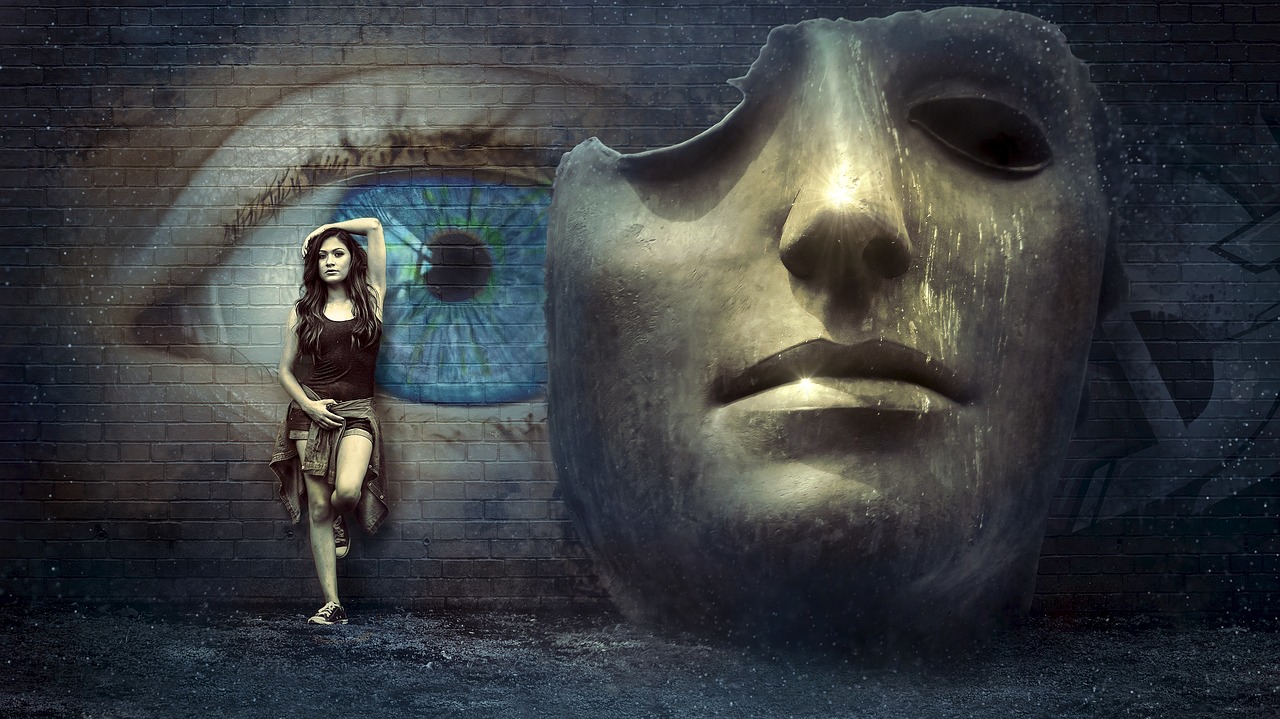
Metal Sculptures for Outdoor Spaces
When it comes to enhancing your outdoor spaces, metal sculptures can be the perfect solution. These stunning pieces not only add a touch of creativity and personality to your garden, patio, or yard, but they also serve as durable art that can withstand the elements. Imagine stepping into your backyard and being greeted by a whimsical metal bird or a striking abstract piece that catches the sunlight and dances with shadows. It’s like having a conversation starter right in your garden!
Creating your own metal sculptures can be an incredibly rewarding experience. Not only do you get to express your artistic side, but you also have the opportunity to make something truly unique that reflects your personal style. The beauty of working with metal is that it can be shaped, welded, and painted in countless ways, allowing for endless possibilities. Whether you’re a seasoned artist or a DIY novice, there’s a project out there that’s perfect for you.
To get started, consider the following tips for crafting your own outdoor metal sculptures:
- Choose Your Materials Wisely: Look for scrap metal, old tools, or even discarded appliances. These can often be transformed into beautiful sculptures with a little creativity.
- Think About Scale: Consider the size of your space. A massive sculpture can become a focal point, while smaller pieces can be charming accents.
- Weather Resistance: Ensure the materials you choose can withstand outdoor conditions. Rust-resistant metals or protective coatings can help maintain your sculpture’s beauty over time.
Additionally, you can incorporate found objects into your sculptures to give them a unique flair. Old gears, bicycle parts, or even kitchen utensils can be combined to create something that tells a story. Imagine a sculpture made from a rusty bicycle frame, transformed into a whimsical garden creature that brings a smile to everyone who passes by. The possibilities are as vast as your imagination!
Don’t forget about painting and finishing techniques. A splash of color can breathe new life into your metal art. Consider using weather-resistant paints or patinas to enhance the visual appeal and protect your sculptures from the elements. You could even experiment with different finishes to achieve a rustic or modern look, depending on your outdoor aesthetic.
In summary, metal sculptures can truly transform your outdoor spaces into artistic havens. They not only provide a visual treat but also reflect your creativity and commitment to sustainability. So, gather your materials, unleash your artistic spirit, and start crafting your very own outdoor masterpiece today!
Q: What type of metal is best for outdoor sculptures?
A: Metals like stainless steel, aluminum, and treated iron are ideal for outdoor sculptures due to their durability and resistance to rust.
Q: Can I use household items for my sculptures?
A: Absolutely! Household items like old tools, kitchen utensils, or even scrap metal can be creatively repurposed into stunning sculptures.
Q: How do I maintain my outdoor metal sculptures?
A: Regular cleaning with mild soap and water, along with periodic checks for rust, can help maintain the beauty of your sculptures. Applying a protective sealant can also extend their lifespan.
Q: Do I need special tools to create metal sculptures?
A: While basic tools like pliers, a hammer, and a welding machine can help, many projects can be completed with simple hand tools and creativity.
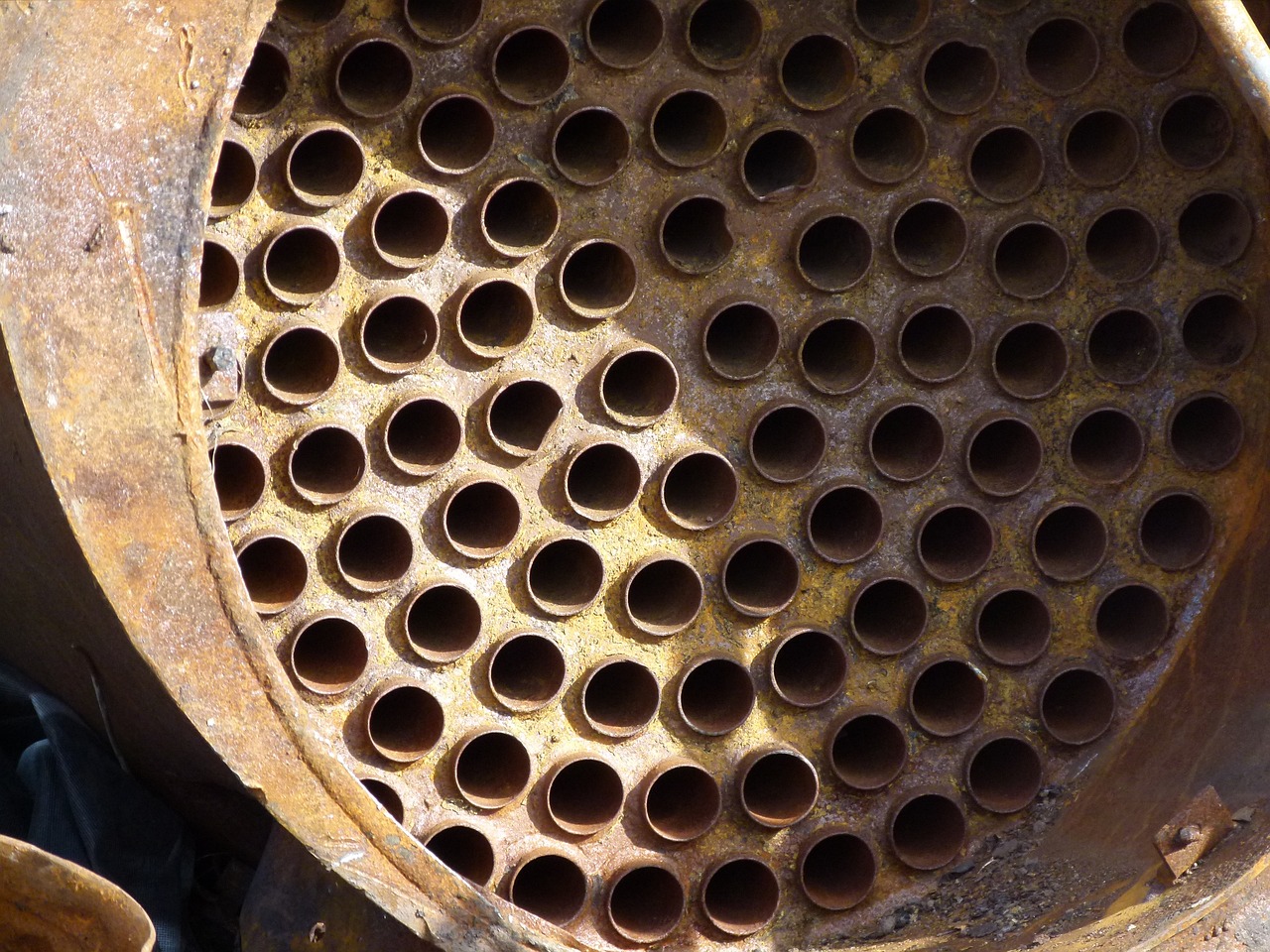
Using Found Objects
When it comes to creating unique metal sculptures, incorporating found objects can truly elevate your artistic game. Think about it—how often do we overlook the beauty in everyday items? Old tools, discarded machinery parts, and even forgotten pieces of furniture can be transformed into breathtaking art. The charm of using found objects lies in their stories; each piece carries a history, making your sculpture not just a decorative item, but a conversation starter.
So, how do you go about sourcing these treasures? Start by exploring your own garage or shed. You might be surprised at what you can repurpose. Next, consider visiting local flea markets, thrift stores, or even junkyards. These places are gold mines for artists looking to find unique components. When you spot something that catches your eye, ask yourself: How can I integrate this into my design? The possibilities are endless!
Once you've gathered your found objects, the real fun begins. Combining different materials can create stunning contrasts and textures. For instance, imagine pairing a rusty cogwheel with a shiny metal rod. The juxtaposition of the old and new can evoke a sense of nostalgia while still feeling fresh and modern. Additionally, don't hesitate to mix metals; the interplay between copper, steel, and aluminum can add depth to your sculpture.
As you start assembling your sculpture, think about the overall composition. Balance is key. You want to create a piece that draws the eye and invites viewers to explore every angle. Use strong adhesives or welding techniques to ensure your sculpture is sturdy and can withstand the elements, especially if it will be displayed outdoors. Remember, a well-constructed piece not only looks good but also lasts longer, allowing you to enjoy your creation for years to come.
Lastly, consider the finishing touches. A little paint or patina can go a long way in enhancing the visual appeal of your sculpture. Whether you choose to keep the raw, rustic look or opt for a vibrant splash of color, your choices will reflect your personal style. So, roll up your sleeves, gather those found objects, and let your creativity run wild. You might just create a masterpiece that transforms your space!
- What types of found objects can be used in metal sculptures? Almost anything made of metal can be used, including old tools, machinery parts, and even scrap metal.
- Do I need special tools to work with found objects? Basic tools like pliers, a welding machine, or strong adhesives are typically sufficient, depending on the complexity of your project.
- How can I ensure my sculpture is weather-resistant? Use weatherproof coatings and rust-resistant metals, and make sure all parts are securely attached.
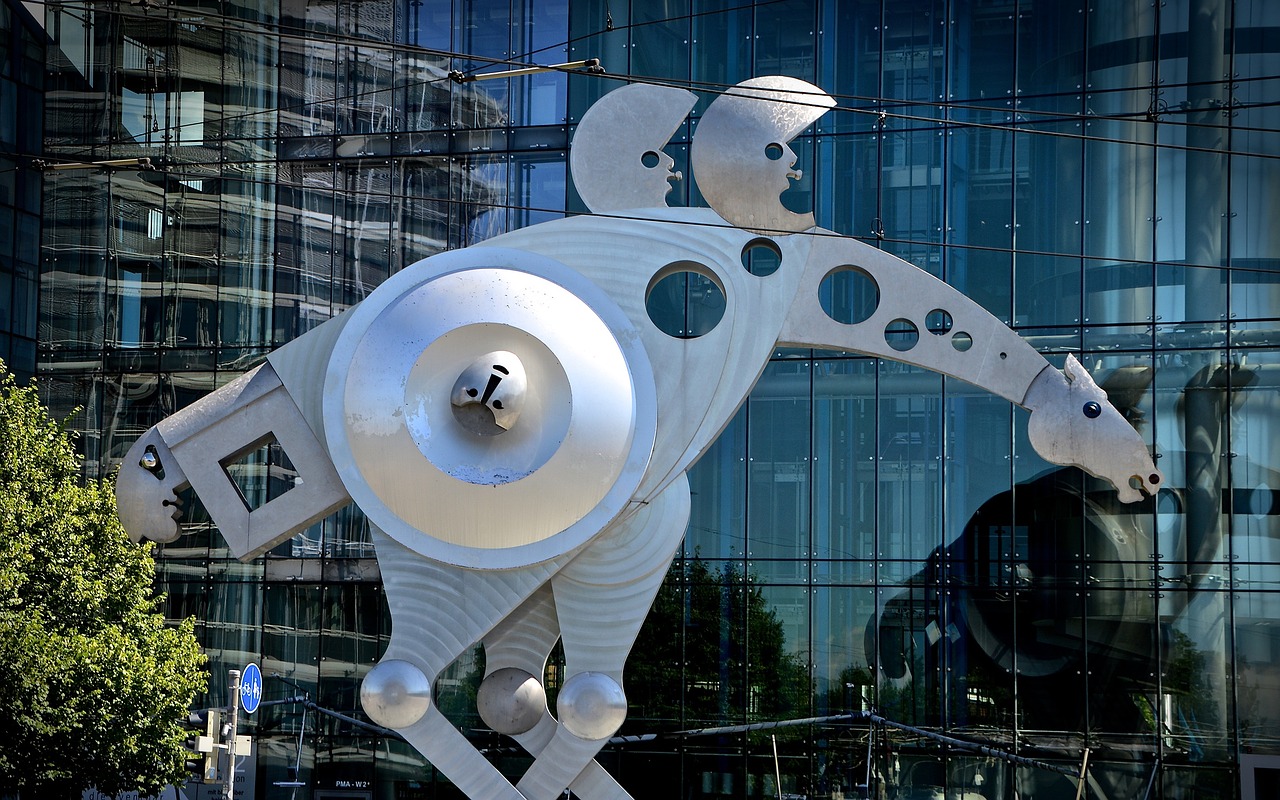
Painting and Finishing Techniques
When it comes to transforming recycled metal into stunning outdoor sculptures, the right painting and finishing techniques can make all the difference. Not only do these techniques enhance the visual appeal of your creations, but they also provide essential protection against the elements. So, how do you turn a rusty piece of scrap into a vibrant, eye-catching work of art? Let’s dive into some effective methods!
First off, preparation is key. Before you even think about applying any paint, you need to ensure that your metal surface is clean and free from rust. A good scrub with a wire brush or sandpaper can do wonders. Once you've prepped the surface, consider applying a rust-inhibiting primer. This step is crucial as it not only helps paint adhere better but also adds an extra layer of protection against moisture, which can cause rust.
Now, onto the fun part—painting! You have a variety of options here:
- Spray Paint: Ideal for achieving a smooth, even finish. It’s great for intricate designs and hard-to-reach areas.
- Brush-On Paint: Offers more control and is perfect for larger surfaces. Plus, you can choose from various finishes, such as matte or glossy.
- Metallic Paint: For a touch of glamour, metallic paints can give your sculptures a shimmering effect that catches the eye.
After applying your chosen paint, consider adding a clear sealant to protect your artwork from the elements. This sealant acts like a shield, preventing moisture and UV rays from fading your colors over time. It’s like giving your sculpture a raincoat!
For those looking to create a more rustic or vintage look, you might want to explore patina techniques. Patina can be achieved through various methods, including using chemical solutions or natural weathering processes. This technique not only adds depth and character to your metal pieces but also tells a story of age and beauty.
Finally, don't forget to experiment! Mixing colors, layering different finishes, or even incorporating textures can lead to unexpected and delightful results. Just like a painter on canvas, let your creativity flow and see where it takes you. Remember, the beauty of DIY projects lies in their uniqueness—your sculptures should reflect your personal style.
Q1: What type of paint is best for outdoor metal sculptures?
A1: Look for paints specifically designed for metal surfaces, preferably those labeled as rust-inhibiting or weather-resistant.
Q2: How can I achieve a distressed look on my metal sculpture?
A2: You can create a distressed look by applying a base coat, then lightly sanding or scraping certain areas to reveal the underlying metal or a different color.
Q3: Is it necessary to use a primer before painting?
A3: Yes, using a primer is highly recommended as it improves paint adhesion and provides an additional layer of protection against rust.
Q4: How often should I reapply sealant on my outdoor sculptures?
A4: It’s a good idea to check your sculptures annually and reapply sealant as needed, especially after harsh weather conditions.

Functional Decor Items
When it comes to home decor, the fusion of style and utility is a match made in heaven. Recycled metal offers an incredible opportunity to create functional decor items that not only look great but also serve a purpose in our daily lives. Imagine having a stunning piece of furniture that doubles as a conversation starter or a lamp that not only lights up a room but also showcases your creative flair. The beauty of working with recycled metal is that it allows you to express your personality while being eco-friendly.
One of the most exciting aspects of using recycled metal is the versatility it brings to various decor items. For instance, you can transform old metal scraps into unique furniture pieces like tables and chairs. This not only helps in reducing waste but also results in one-of-a-kind items that reflect your individual style. Think about a coffee table made from an old metal drum, or chairs crafted from vintage bicycle frames. These pieces not only serve their intended purpose but also tell a story, making your space feel more personal and inviting.
But it doesn’t stop there! Lighting is another fantastic area where recycled metal can shine. Imagine creating a stunning chandelier from old metal pipes or a lamp from discarded metal containers. These DIY lighting solutions can add a touch of industrial chic to your home while being functional. Plus, they can be customized to fit any space, whether you prefer a rustic look or something more modern. The possibilities are endless!
Additionally, you can explore the idea of metal wall shelves. These are not just practical for storage; they also serve as beautiful decor pieces. You can create shelves that showcase your favorite books, plants, or decorative items, all while adding a touch of elegance to your walls. When designing these shelves, consider incorporating different shapes and sizes of metal to create a visually appealing arrangement.
Here’s a quick overview of some functional decor items you can create using recycled metal:
- Furniture: Tables, chairs, and benches made from metal scraps.
- Lighting: Unique lamps and chandeliers that brighten your space.
- Wall shelves: Stylish storage solutions that enhance your decor.
- Planters: Metal containers that beautifully display your plants.
In summary, the charm of functional decor items made from recycled metal lies in their ability to combine aesthetics with practicality. By embracing this creative approach, you not only enhance your living space but also contribute positively to the environment. So, roll up your sleeves and let your imagination run wild with recycled metal – you’ll be amazed at what you can create!
1. What types of recycled metal can I use for DIY projects?
You can use a variety of metals, including aluminum, steel, iron, and copper. Just ensure they are clean and free of any toxic substances.
2. Do I need special tools to work with recycled metal?
While basic tools like pliers, hammers, and saws can suffice, investing in a metal grinder, welding equipment, and safety gear is recommended for more complex projects.
3. How can I ensure my metal decor items are safe for indoor use?
Make sure to remove any sharp edges and use non-toxic paints or finishes if you plan to paint your metal items. Always prioritize safety!
4. Can I sell my recycled metal decor items?
Absolutely! If you create unique and high-quality pieces, there’s a market for handmade decor items. Consider setting up an online shop or selling at local craft fairs.
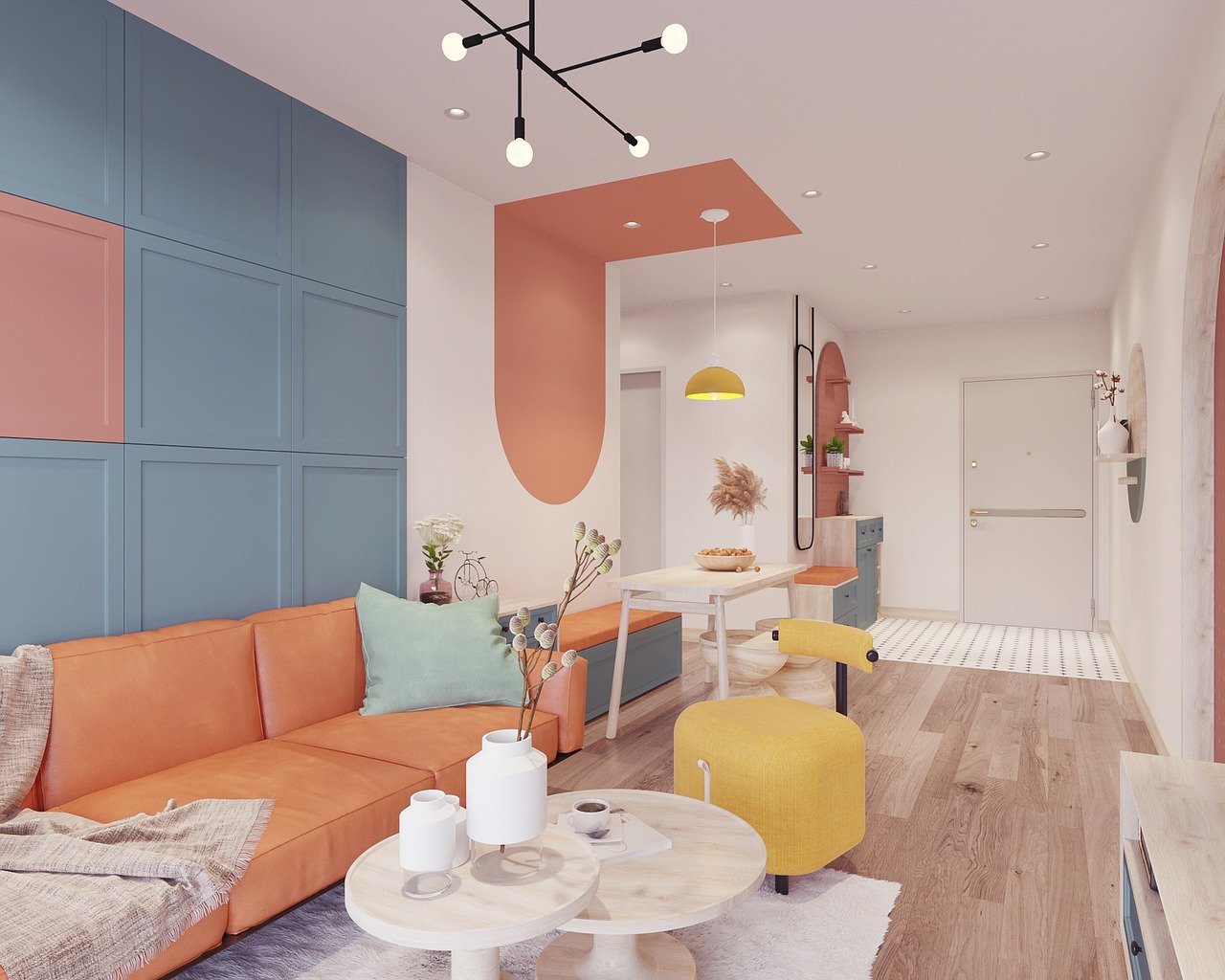
Upcycling Metal Furniture
Upcycling metal furniture is not just a trend; it's a sustainable lifestyle choice that allows you to breathe new life into old pieces. Imagine taking a rusty, forgotten chair and transforming it into a stunning statement piece that sparks conversation. By upcycling, you're not only saving money but also contributing to a healthier planet by reducing waste. The beauty of metal furniture lies in its durability and versatility, which means you can create unique items that reflect your personal style while being environmentally conscious.
When considering upcycling metal furniture, think about the potential for customization. You can easily refurbish a metal table or chair with a fresh coat of paint, or even add new elements to enhance its functionality and aesthetic appeal. For instance, a simple metal stool can be transformed into a stylish side table with a few adjustments. You might wonder, "How do I get started?" Well, the first step is to identify the pieces you want to upcycle. Look around your home, visit thrift stores, or check out garage sales for hidden gems just waiting to be transformed.
Once you've gathered your materials, it's time to unleash your creativity. One popular method is to use chalk paint for a matte finish that can give your metal furniture a modern look. Alternatively, metallic spray paints can add a touch of glam. Don't forget to consider the color palette that suits your space; vibrant colors can make a bold statement, while muted tones can create a more serene atmosphere.
For those who enjoy a bit of DIY magic, consider incorporating other materials like wood or fabric to create a mixed-media piece. For example, you could pair a metal frame with reclaimed wood for a rustic coffee table or add cushions to metal chairs for comfort and style. The possibilities are endless! Plus, this approach allows you to personalize your furniture to match your existing decor.
Another exciting aspect of upcycling metal furniture is the opportunity to create functional art. Think about how you can merge beauty with utility. A metal shelving unit can be both a storage solution and a striking visual element in your home. You could even create a unique wine rack from an old metal ladder or transform a metal cart into a mobile bar. With a little imagination, your furniture can tell a story while serving a purpose.
However, it’s essential to keep in mind some practical considerations when upcycling metal furniture. Ensure that the pieces you choose are structurally sound. If a chair wobbles or a table is unstable, it may not be worth the effort. Additionally, always prioritize safety; wear gloves and goggles when working with metal to protect yourself from sharp edges and debris.
In conclusion, upcycling metal furniture is a fantastic way to express your creativity while making a positive impact on the environment. By transforming old pieces into something new, you not only save money but also create unique decor that reflects your personality. So, gather your tools, unleash your creativity, and start your upcycling journey today!
- What tools do I need for upcycling metal furniture? Basic tools like sandpaper, paintbrushes, and a screwdriver are essential. Depending on your project, you may also need a drill or welding equipment.
- Can I upcycle any type of metal furniture? Yes! Just ensure that the furniture is structurally sound and safe to use.
- How do I prepare metal furniture for painting? Clean the surface thoroughly, remove any rust, and sand it down to create a smooth finish before painting.
- Is upcycling metal furniture cost-effective? Absolutely! Upcycling can save you money compared to buying new furniture, especially if you source materials from thrift stores or your own home.
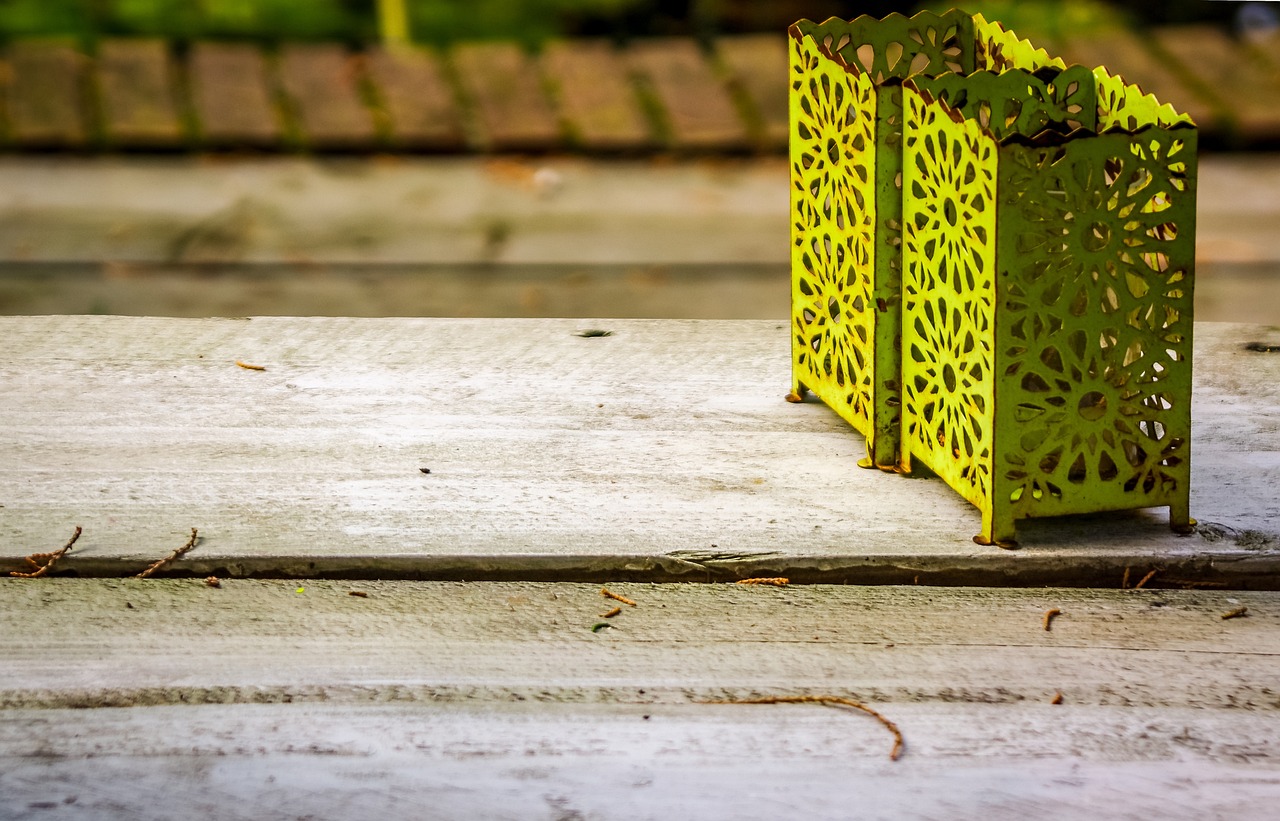
Creating Metal Planters
Crafting metal planters is not just a fun DIY project; it's a brilliant way to merge style and sustainability in your home or garden. Imagine transforming old metal containers or scraps into stunning planters that not only house your favorite plants but also serve as striking decor pieces. Whether you're an avid gardener or just looking to spruce up your space, metal planters can add a touch of industrial chic while being incredibly functional.
When creating metal planters, the first step is to choose the right type of metal. Some popular options include copper, steel, and galvanized tin. Each type offers unique aesthetic qualities and durability, making them suitable for various environments. For instance, copper planters develop a beautiful patina over time, adding character to your garden, while galvanized tin is perfect for rustic themes and can withstand the elements.
Once you've selected your metal, the next step is to decide on the design and size of your planters. You can create everything from small herb pots to large statement pieces. Consider the following ideas:
- Hanging Planters: Use metal buckets or bowls suspended from chains to create eye-catching hanging gardens.
- Stacked Planters: Stack smaller metal containers to create a tiered effect, perfect for showcasing a variety of plants.
- Wall-Mounted Planters: Attach metal planters directly to your walls for a unique vertical garden.
To ensure your metal planters are both beautiful and functional, it's crucial to address drainage. Metal can retain moisture, which can lead to root rot. To prevent this, drill several small holes in the bottom of your planters. This will allow excess water to escape, keeping your plants healthy and thriving. Additionally, consider adding a layer of gravel at the bottom before filling it with soil. This will further enhance drainage and provide a stable base for your plants.
Now, let’s talk about the finishing touches! Painting your metal planters can give them a fresh look and help them blend with your decor. Use outdoor paint designed for metal surfaces to ensure durability. You can also experiment with techniques like patina finishes or even rusting for an aged look. If you prefer a more natural aesthetic, leaving the metal unpainted can showcase its raw beauty.
Finally, don't forget to personalize your planters! You can add your own artistic flair by stenciling designs, attaching decorative elements, or even using wire to create intricate patterns. The possibilities are endless, and the result will be a collection of unique planters that reflect your personality and style.
Creating metal planters is not just about gardening; it's about making a statement. With a little creativity and effort, you can turn recycled metal into stunning works of art that enhance your living space while promoting sustainability. So grab those old metal containers and let your imagination run wild!
Q: Can I use any type of metal for planters?
A: While you can technically use any metal, it's best to choose materials like copper, steel, or galvanized tin that are durable and suitable for outdoor conditions.
Q: How do I ensure proper drainage in my metal planters?
A: Drill several small holes in the bottom of the planter and consider adding gravel to the base to enhance drainage and prevent water accumulation.
Q: Can I paint my metal planters?
A: Yes! Use outdoor paint designed for metal surfaces to ensure longevity, and feel free to experiment with different colors and finishes.
Q: How do I prevent rusting in my metal planters?
A: Choose galvanized or coated metal to resist rust. Regular maintenance and keeping the planters dry can also help prevent rusting.
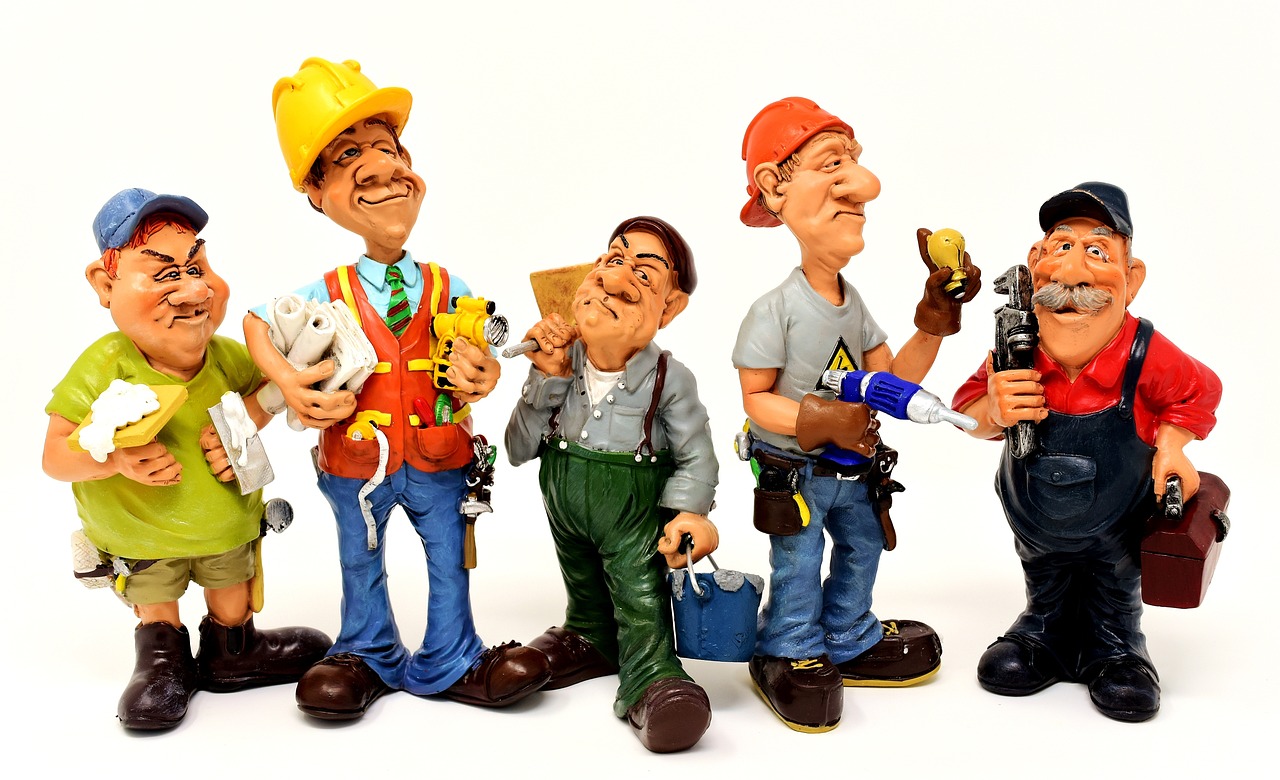
DIY Lighting Solutions
When it comes to lighting, the right fixtures can completely transform a space, adding warmth and character. Why settle for generic store-bought lamps when you can create your own unique masterpieces using recycled metal? DIY lighting solutions not only showcase your creativity but also promote sustainability by giving new life to materials that would otherwise end up in a landfill. Imagine walking into a room illuminated by a stunning, handcrafted lamp that tells a story—your story. Sounds appealing, right?
One of the most exciting aspects of working with recycled metal is the variety of materials you can use. From old pipes and tin cans to discarded metal sheets, the possibilities are endless. Each piece can be transformed into a beautiful lighting fixture that not only serves a purpose but also acts as an eye-catching conversation starter. For instance, consider using an old metal colander as a pendant light. With a little creativity, you can hang it from the ceiling, allowing light to filter through the holes, casting intriguing patterns on your walls.
Another fantastic idea is to create a table lamp from an old bicycle wheel. Imagine the rustic charm it would add to your living space! Simply attach a light socket to the center of the wheel, add a lampshade that complements your decor, and voilà! You have a one-of-a-kind lighting solution that is sure to impress your guests.
For those who prefer a more industrial look, you might want to try making a lamp from steel pipes. These can be easily assembled into various shapes, allowing for a lot of flexibility in design. Not only do they look modern and chic, but they are also incredibly sturdy. Pair your pipe lamp with a vintage-style Edison bulb for that perfect blend of old and new.
Regardless of the type of lighting fixture you choose to create, there are a few essential tools and materials you will need:
- Wire cutters: For cutting electrical wires.
- Drill: To make holes in metal for wiring.
- Light socket and bulb: The heart of your lighting solution.
- Safety gear: Always wear gloves and goggles when working with metal.
Before you start crafting, it's crucial to plan your design carefully. Sketch out your ideas and consider how the light will be distributed in the space. Once you have a clear vision, gather your materials and let your creativity flow! Remember, the beauty of DIY projects is that there are no strict rules—your lamp can be as quirky or as sophisticated as you want it to be.
Finally, don’t forget about the finishing touches. A little paint or polish can go a long way in enhancing the aesthetic appeal of your metal lighting fixtures. You might want to try a distressed finish for a vintage look or a bright color to make a bold statement. Whatever you choose, the key is to make it uniquely yours.
Q: Can I use any type of metal for my lighting projects?
A: While you can use various metals, it's best to choose materials that are safe for electrical use and can withstand heat. Avoid using metals that may rust or corrode over time.
Q: What if I have no prior experience with electrical work?
A: If you're new to electrical work, consider consulting a professional or using pre-wired kits that simplify the process. Safety is paramount, so ensure you understand the basics before proceeding.
Q: How do I ensure my DIY lamp is safe?
A: Always use high-quality electrical components, check for stability, and make sure all connections are secure. It's also wise to test your lamp thoroughly before leaving it unattended.
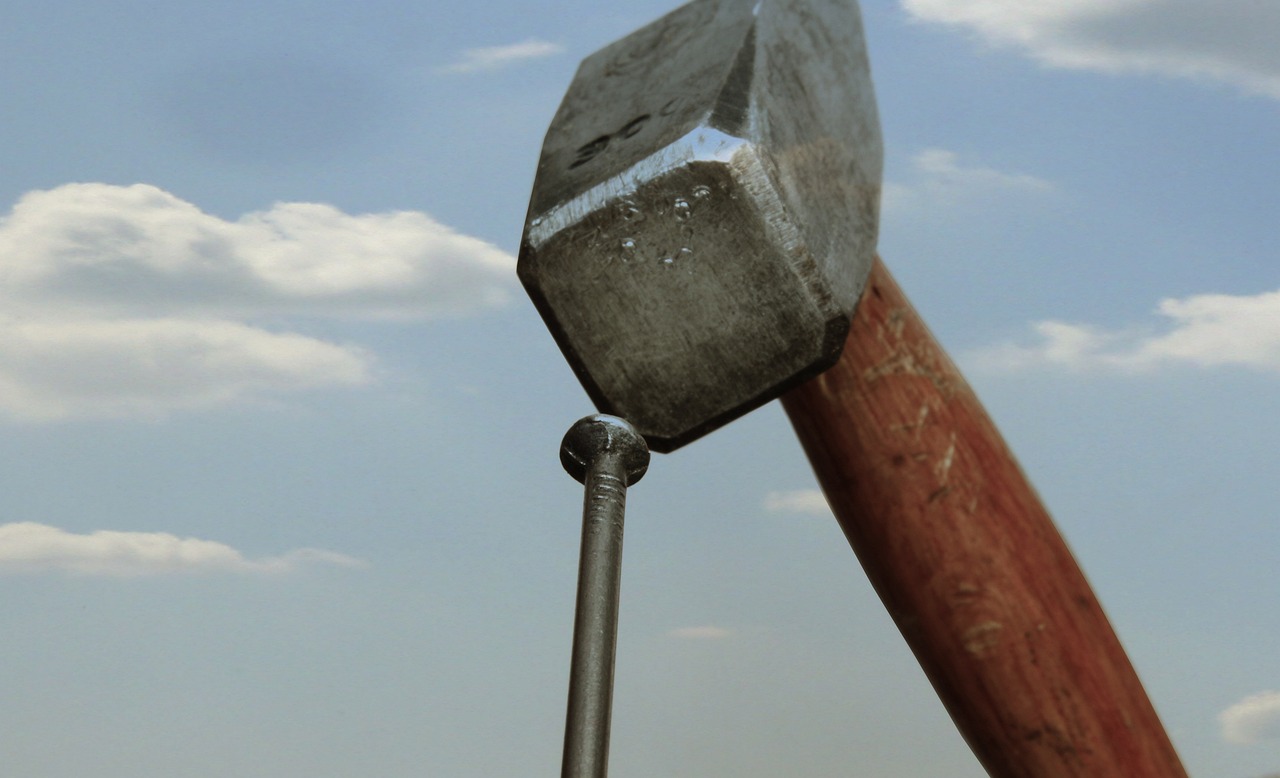
Safety and Tools for Metal Projects
When diving into the world of recycled metal projects, safety should always be your top priority. Working with metal can be both exciting and dangerous if the right precautions aren’t taken. Imagine wielding tools like a blacksmith of old, but without the right gear, you could easily find yourself in a sticky situation. So, let’s talk about the essential tools and safety measures you need to keep your DIY projects both enjoyable and accident-free.
First off, let’s discuss the tools you’ll need for your metal projects. Investing in the right equipment can make a world of difference, not just in the quality of your work but also in your safety. Here’s a quick rundown of some essential tools:
| Tool | Purpose |
|---|---|
| Angle Grinder | For cutting and shaping metal |
| Welding Machine | For joining metal pieces together |
| Metal Snips | For cutting thin sheets of metal |
| Drill | For creating holes in metal |
| Safety Goggles | To protect your eyes from metal shards |
| Gloves | To protect your hands from sharp edges |
Now that you have an idea of the tools you’ll need, let’s talk about safety precautions. Just like a knight suits up before battle, you should gear up before tackling any metal project. Here are some crucial safety tips to keep in mind:
- Wear Protective Gear: Always use safety goggles to shield your eyes and gloves to protect your hands. A dust mask can also be handy when cutting or grinding metal to avoid inhaling harmful particles.
- Work in a Well-Ventilated Area: Metalworking can produce fumes and dust, so ensure your workspace is well-ventilated. If you’re working indoors, consider using a fan or opening windows.
- Be Mindful of Your Surroundings: Clear your workspace of clutter and keep flammable materials away from your metal projects. A tidy workspace is not only safer but can also inspire creativity.
- Follow Tool Instructions: Each tool comes with its own set of instructions. Familiarize yourself with how to operate each tool safely before you start.
Remember, safety doesn’t have to be boring! Think of it as your trusty shield, protecting you from potential mishaps. By following these guidelines, you can focus on what really matters: bringing your creative vision to life with recycled metal.
In conclusion, whether you’re crafting a stunning outdoor sculpture or a functional piece of furniture, having the right tools and adhering to safety practices will ensure a smooth and enjoyable DIY experience. So, gear up, stay safe, and let your imagination run wild!
Q: What types of recycled metal can I use for my projects?
A: You can use a variety of metals such as aluminum, steel, and copper. Each type has its own unique properties and aesthetic appeal.
Q: Do I need special training to work with metal?
A: While formal training can be beneficial, many DIY enthusiasts learn through practice and online resources. Just make sure to prioritize safety!
Q: Can I paint recycled metal?
A: Absolutely! Painting can enhance the look of your metal projects. Just ensure the surface is clean and use a primer designed for metal.
Frequently Asked Questions
- What types of recycled metal can I use for DIY projects?
You can use a variety of recycled metals, including aluminum, steel, copper, and tin. Each type has its unique properties and can be sourced from old appliances, cans, or scrap yards. The key is to choose metals that are durable and suitable for your specific project.
- How do I ensure safety while working with metal?
Safety is paramount when working with metal. Always wear protective gear such as gloves, goggles, and a dust mask. Make sure to work in a well-ventilated area and use appropriate tools designed for metalworking to avoid injuries. Familiarize yourself with the tools before starting your project.
- Can I paint recycled metal for my decor projects?
Absolutely! Painting recycled metal can enhance its appearance and protect it from rust. Use a primer designed for metal surfaces, followed by your choice of paint. Spray paint is often recommended for an even finish, but you can also use brush-on paint for detailed work.
- What are some creative ideas for using recycled metal in home decor?
There are countless ways to incorporate recycled metal into your decor! Consider creating wall art, sculptures, or even furniture pieces. You can also make functional items like lighting fixtures or planters. The possibilities are endless, limited only by your imagination!
- How do I find found objects for my metal sculptures?
Finding unique metal objects can be a fun treasure hunt! Check out local flea markets, thrift stores, or even your garage for items like old tools, kitchenware, or scrap metal. You can also ask friends and family if they have any unused items they’d be willing to part with.
- What tools do I need for working on metal projects?
Essential tools for metalworking include a metal saw, drill, welding equipment, and safety gear. Depending on your project, you may also need a grinder, pliers, and a hammer. Always choose quality tools to ensure safety and efficiency in your DIY endeavors.
- Can I use recycled metal outdoors?
Yes! Recycled metal is perfect for outdoor use, especially when treated properly. Make sure to use rust-resistant finishes or sealants to protect your projects from the elements. Metal sculptures and planters can add a stylish touch to your garden or patio.



















